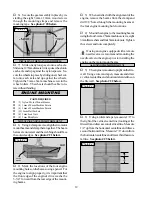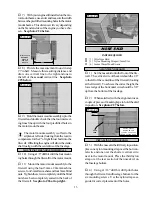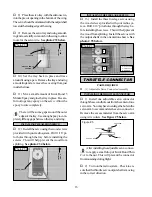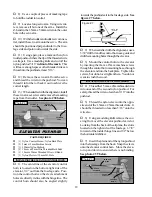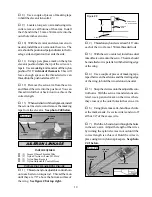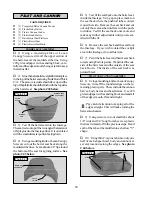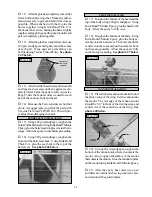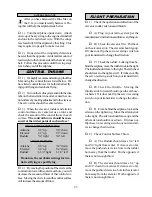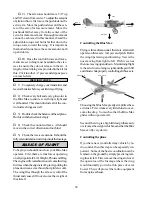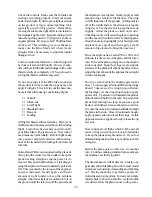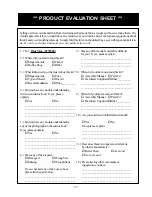
25
Check the controls. Make sure the throttle and
steering are working properly. Start your engine
and at low throttle, try driving the airplane around
on the ground. A large, unused parking lot is
especially good for this practice. Remember,
moving the stick to the right or left is in relation to
the airplane's right or left. Keep practicing, it will
take some getting used to. Try figure 8's and rect-
angular patterns. Don't go to fast! The Blue Max
is not a car! This will also give you a chance to
make sure the Blue Max's tail wheel tracks
straight. It may be necessary to adjust the rudder
linkage or trim.
Learn to control the throttle too. Most flying will
be done at less than full throttle. However, take-
offs will be at full throttle and landings will be with
throttle at idle of completely off. So, get used to
setting the throttle at different speeds.
If you can easily steer the Blue Max around on
the ground, it's time to take that experience and
apply it to flight. First, let's lay out the basic ma-
neuvers that will make up your training flights.
1) Takeoff
2) Climb-out
3) Level Flight
4) Standard Turns
5) Descent
6) Landing
All flight is based on these few tasks. Here, we've
laid them out in the same order they will be during
flight. Learn these basics and you will soon fly
your Blue Max with great success. Now look at
each maneuver individually. Before flight, make
sure you are completely familiar with the func-
tions of the transmitter including all controls and
trim tabs.
Takeoff and Climb-out requires that the plane be
facing into the wind. Use the rudder to keep the
plane tracking straight as engine power is in-
creased. Because the Blue Max is a tail dragger
setup the airplane will want to naturally pull to the
left. This is caused by the torque of the engine as
power is increased. Gently apply a sufficient
amount of right rudder to keep the airplane
straight. Allow the airplane to continue to roll on
the ground until the tail is up off the ground and
the airplane is moving fast. Gently apply a small
amount of up elevator to lift the nose. The wing
will lift the plane off the ground. At this point let
off of the rudder and use the ailerons to keep the
wings level. Use the elevator to keep the nose up
slightly. Allow the plane to climb on its own.
Climbing too fast will cause the plane to pitch up
and the nose will (called a stall). If this happens,
allow the nose to drop slightly (which will give the
airplane more speed) and then apply a small
amount of up elevator to bring the nose level.
Once the airplane has reached 50 to 100 feet of
altitude, it is time to level the plane and then try a
turn. To level the plane, simply move the elevator
stick to neutral. Keep the wings level using the
ailerons. If the plane still climbs slightly or turns,
adjust the trim tabs until the airplane flies straight
with no stick input.
Now try a turn (before the airplane gets too far
away). To turn, apply aileron until the wing drops
about 15 degrees (or the wing tip is just below
the fuselage). As the wing drops begin to apply
up elevator. Up elevator will maintain the plane's
altitude and will hold it in the turn. To prevent the
plane from turning too steep, as soon as a good
bank is established, release the aileron control.
Use only the elevator to maintain altitude and hold
the plane in the turn. Once it has turned enough,
apply opposite aileron to level the wings. As this
opposite aileron is applied, slowly release the up
elevator.
Now continue level flight, which will be a small
series of tiny corrections of elevator and rudder
to keep the plane straight and level. If you lost
altitude during the turn, this is a good time to climb
out again.
Before the plane gets too far away, try another
turn. Continue making standard turns and keep
the airplane over the flying field.
The next maneuver will be descent. Usually, one
pairs descent with landing, but in fact, most model
airplanes are constantly descending and climbing
out. Having the ability to perform a good con-
trolled descent is important. To descend, simply
throttle back to about 1/4 throttle. As the throttle
is reduced, allow the plane's nose to drop some.


